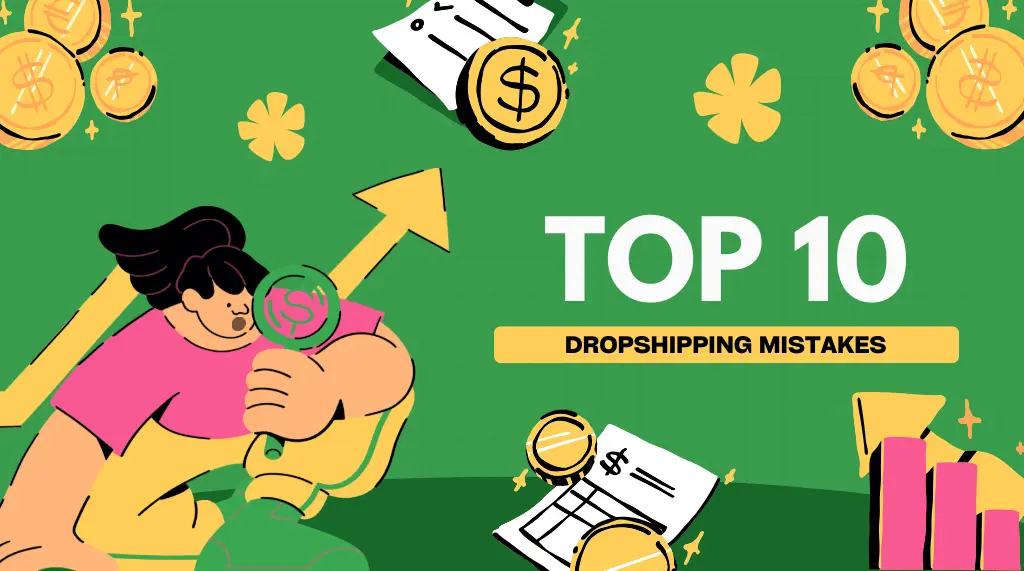Embarking on a dropshipping journey can be exhilarating yet challenging. Many new entrepreneurs dive into this model hoping for quick profits but often fall victim to common pitfalls. Here’s a comprehensive look at the top ten mistakes to avoid for a successful dropshipping experience.
1. Ignoring Shipping Times
One of the most critical mistakes is not checking shipping times for the countries targeted in your marketing. When you source products from platforms like AliExpress, the shipping times can vary significantly based on the destination. For instance, shipping to the United States might take 14-17 days, while shipping to Canada could extend up to two months. Failing to acknowledge these timeframes can lead to dissatisfied customers, excessive refund requests, and a tarnished reputation. To mitigate these issues, always verify the shipping options and times before launching your ads.
2. Setting Unrealistic Goals
Many beginners enter the dropshipping world with inflated expectations, hoping to make substantial profits almost overnight. It’s essential to understand that building a successful dropshipping business takes time and persistence. Instead of fixating on earning large sums quickly, focus on acquiring knowledge and learning the ropes of the industry. Establishing realistic goals will help you navigate the initial challenges and avoid disappointment.
3. Starting with an Insufficient Budget
Another common misstep is launching a dropshipping store with an inadequate budget. Many new dropshippers think they can get started with a couple of hundred dollars, but this approach is often flawed. To increase the likelihood of finding winning products, it’s advisable to start with a budget of at least $2,000 to $3,000. This allows for sufficient testing and experimentation. If you don’t have this capital, consider securing a job to build your budget before diving into the business.
4. Neglecting Viral Products That Solve Problems
Many newcomers focus on selling niche items or trendy products that don’t necessarily solve problems. This can lead to tough competition without a clear selling point. Instead, aim to identify and market products that fill a specific need in the marketplace. For instance, products like a specialized knee brace can cater to individuals with mobility issues. By addressing a genuine problem, you enhance your chances of making sales and attracting a loyal customer base.
5. Opting for a General Store Approach
Launching a general store filled with various products can seem appealing, but this strategy often leads to confusion and poor sales performance. Beginners often think that more products equal more sales, but this isn’t true. Instead, focus on creating a niche store or a one-product store that allows you to concentrate on a specific market. This focused approach helps you craft better product descriptions, design appealing graphics, and run effective marketing campaigns. A streamlined store also establishes credibility in the eyes of potential customers.
6. Selling Copyrighted or Trademarked Products
One major oversight that can endanger your business is selling copyrighted or trademarked products. Beginners might overlook this detail, thinking that selling popular items will guarantee success. However, companies frequently monitor the marketplace for trademark infringements. Selling items like superhero costumes or branded jerseys can result in your store being shut down and potentially lead to legal repercussions. Always ensure that the products you sell are free from copyright issues.
7. Not Understanding Your Profit Margins
As a new dropshipper, it’s vital to have a firm grasp of your profit margins. Too often, beginners scale their operations without fully understanding how much they are actually earning. Utilize tools like Life Timely or Order Metrics to track your real-time profits and expenses effectively. By knowing your margins, you can make informed decisions about scaling your ads and maximizing profitability, ensuring that you grow sustainably.
8. Using Debit Cards Instead of Credit Cards
When handling expenses related to ads and other business costs, many beginners rely on debit cards. While this is acceptable, using credit cards for these transactions can provide significant advantages. Many business credit cards offer cashback and rewards that can add up over time. For instance, using cards like the Chase Business Inc. or American Express Business Gold can yield rewards that cover expenses like travel or accommodations. Just remember to pay off your balances promptly to avoid interest fees.
9. Not Establishing a Legal Business Entity
Once your dropshipping business starts generating revenue, setting up a legal business entity becomes essential. Initially, you might start as a sole proprietor, but as your business grows, transitioning to an S corporation can provide tax advantages. It’s advisable to consult a local CPA to understand the best structure for your business. Establishing a legal entity not only helps in tax management but also protects your personal assets.
10. Overlooking Marketing Strategies
Finally, many beginners underestimate the importance of a robust marketing strategy. Relying solely on organic traffic can limit your potential for growth. It’s crucial to invest in effective marketing strategies that suit your niche. Utilizing platforms like Facebook and Instagram for targeted advertising can significantly enhance your visibility and sales. Developing a comprehensive marketing plan will set the foundation for your long-term success.
By avoiding these common mistakes, you can set yourself up for a prosperous dropshipping venture. Each of these pitfalls can severely impact your business, so being proactive and educated about the process is essential for success. Remember to focus on learning and iterating as you build your brand, and consider utilizing platforms like Shopify for a seamless selling experience.




